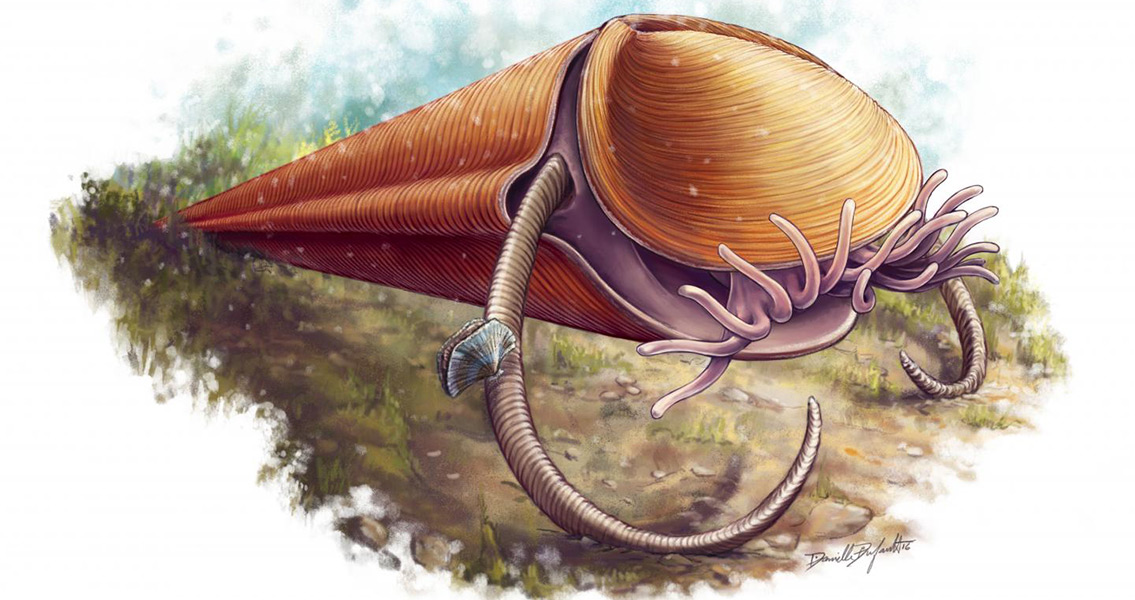<![CDATA[A group of scientists led by an undergraduate from the University of Toronto has identified, for the first time, just what exactly a curious little prehistoric marine creature actually was during its lifetime. According to a university press release, U of T student Joseph Moysiuk and colleagues have been able to identify a strange group of long-extinct cone-shaped marine animals as hyoliths, which would have evolved during the Cambrian period more than 530 million years in the past. One of the first animal species to display evidence of having a mineralized external skeleton, hyoliths were thought at one time to be related to mollusks, squids and snails, but Moysiuk has shown this is not the case. Instead, the curious little creatures were closer to brachiopods than anything else. In a new research study, scientists point out that hyoliths, like other brachiopods, would have had a soft body enclosed between an upper and lower shell or valve. Meanwhile, bivalve molluscs are arranged into left-and-right valves instead. Additional differences include how brachiopods typically only open their valves at the front while feeding, otherwise keeping them closed to provide protection for their internal bodies. The presence of hyoliths in the fossil record has not been scarce up until now. However, what has been absent has been any sort of critical diagnostic of the brachiopod’s soft anatomy. Moysiuk and his team made some surprising and important discoveries to fill in these glaring gaps, the most telling being that of a row of flexible tentacles making up the hyolith feeding structure. These tentacles, which extended away from the mouth, would have been contained between the lower and upper shells – and it was this brachiopod-like feature that saw the hyolith reclassified as such. Living brachiopods feed by sweeping organic material suspended in water into their mouths with their tentacles. Moysiuk suggested that, based on their anatomy, hyoliths would have fed in a similar manner. Hyolith skeletons have long withstood attempts of others to classify the animal thanks to their structure and appearance, which incorporated one cone-shaped, bilaterally symmetrical shell and a smaller cap-like shell that protected the opening of the larger shell. The best visual description of a typical hyolith would be something shaped roughly like a pointed ice-cream cone with an attached cap, much like those that appear atop certain beer steins. Many hyolith species had additional features as well, including a pair of curved, rigid spines that would have curled out between the cone shell and the cap. Known as “helens”, these spines almost resembled horns, but scientists think the spines may have been used to raise the animal’s body above the sediment of the marine floor, allowing the hyolith to stand, stilt-like, and gain better access to passing organic matter. Instrumental in the new classification of the hyolith were new fossilized remains discovered in British Columbia’s famed Burgess Shale deposits, a Cambrian-era fossil deposit that has a reputation for preserving soft-tissue features, something usually not preserved in traditional fossils. The new research paper, published in the journal Nature, can be found online here Image courtesy of Artist: Danielle Dufault. © Royal Ontario Museum]]>
Prehistoric Marine Creatures Identified for First Time
